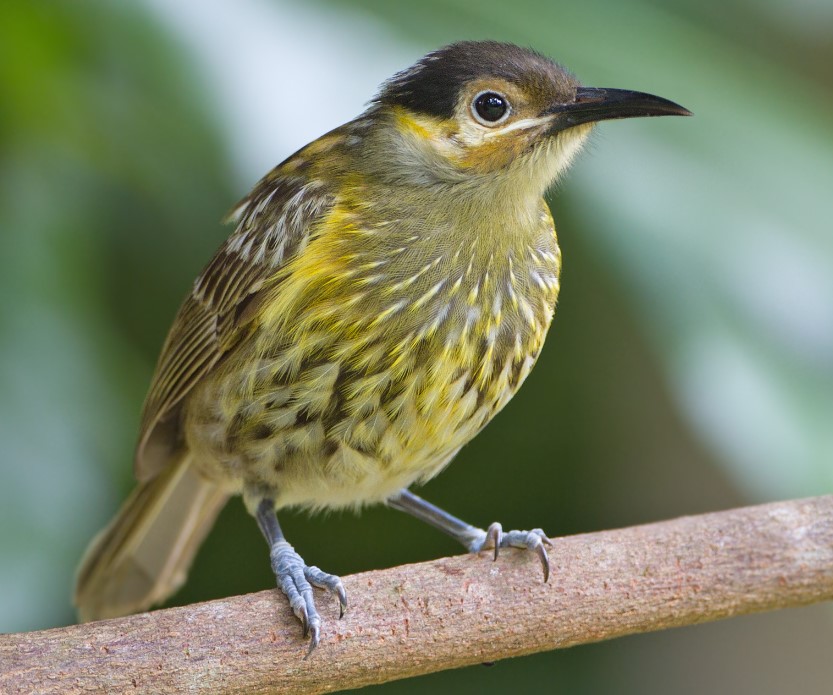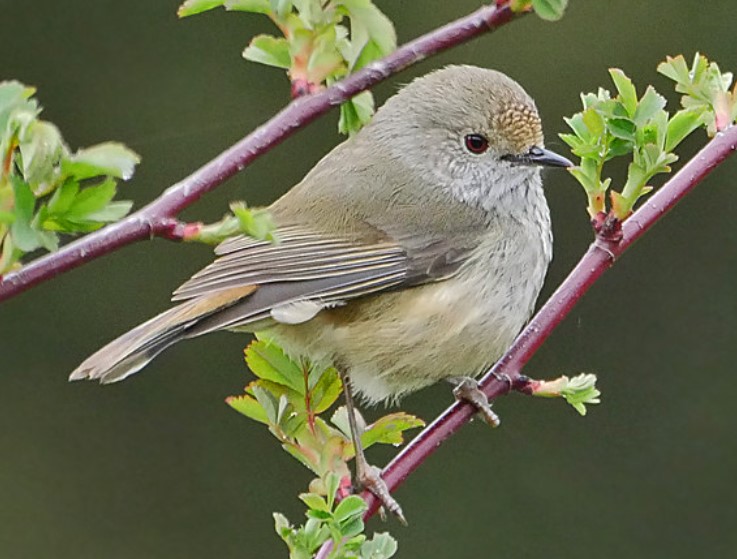Habitat: Compared with other honeyeaters, Macleay’s Honeyeater (Xanthotis macleayanus) is a quiet and unobtrusive bird. They live singly or in pairs in the middle and upper layers of the rainforest canopy in northeastern Queensland. Here, deliberate movements and foraging by probing are more suggestive of riflebirds. The natural habitats of these honeyeaters’ are tropical moist lowland forests and tropical dry forests.
Diet: The diet of Macleay’s Honeyeater consists of about 70 percent insects and spiders, 20 percent nectar, and 10 percent fruit. It finds most of its insects in hanging bunches of dead leaves and vine tangles, and in the search for them, it often buries its entire front half in the dry vegetation, the rustling of the leaves betraying its presence. It also gleans insects from the surfaces of the large leaves of plants such as silver basswood “Tieghemopanax murrayi”, and occasionally hovers to catch an insect or pluck a fruit. Flowers of the umbrella tree Schefjlera attract Macleay’s Honeyeater, and because umbrella trees are frequently grown as ornamental trees, this bird is often attracted to gardens.
Identification: Both sexes are similar. The forehead, crown, and nape are brown-black, and the nape feathers have white shafts. The mantle is streaked brown and yellow, and the rump is yellow-brown. The scapulars are brown with cream triangular tips. The wings and tail are quill brown with yellow-green outer and ochre inner edges. Naked skin around the eye, yellow-gray; side of the head to behind the eye, black; dark line from the bill to the yellow-white ear plume. The chin and throat are gray, blending into a yellow-streaked upper breast. The lower breast feathers are brown with buff triangular tips; the belly is grey-yellow. The eyes are brown. The bill is black. The feet are leaden-grey. The immature bird is duller than an adult. There was a slight indication of white nape spots; markings on the back were less distinct; the front of the neck and upper breast were dull olive-yellow.

Vocalizations: Macleay’s Honeyeater call in territorial advertisement, a loud, rapid, strident five-note call, each note up slurred: tchu-wi, tchu-wi-wii. Also, single-chip and cycling whistles
Nesting and Breeding: Macleay’s Honeyeater nesting and breeding occur in October–January. Nest a deep cup of plant fiber, dead leaves, bark, leaf skeletons, cobwebs, and cocoons; lined with plant fiber; slung by the rim in the horizontal fork, usually fairly high up in the canopy but sometimes as low as 2 meters above ground.
Eggs: The bird usually lays two eggs; smooth, slightly lustrous, pale flesh-buff, doubled and freckled with chestnut, particularly at the larger end where grey markings also occur; oval shape, measuring about 23 x 17 mm.
Distribution: Macleay’s honeyeater is found in a limited distribution of north-eastern Queensland, from Cooktown to Townsville, in the rainforest but also in mangroves, gardens, and, rarely, nearby eucalypt forests. Most abundant in the lowlands.
Alternative Names: This bird is also known as a yellow-streaked honeyeater, mottle-plumaged honeyeater, or a buff-striped honeyeater.
Size: Macleay’s Honeyeater size measures about 185-210mm in length.
Races: There are no races.
Lifestyle: Terrestrial
Kingdom: Animalia
Status: Stable (Least Concern)
Phylum: Chordata
Class: Aves
Order: Passeriformes
Family: Meliphagidae
Genus: Xanthotis
Species: Xanthotis macleayanus
Read More: Tawny-breasted Honeyeater – Beyond Beauty of Melodic Marvel







